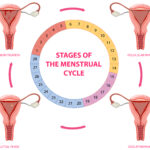FREE SHIPPING OVER $50
She Lost 15 Inches of Dangerous Belly Fat and Reversed Diabetes—Doctors Say You Can Too

Meet Sarah. For years, she was stuck in a frustrating cycle. Her clothes were getting tighter, a stubborn tire of fat was growing around her middle, and her energy was at an all-time low. Her doctor’s last visit was the final straw. A wake-up call in the form of a pre-diabetes diagnosis and a warning about her health. She had tried everything—counting calories, fad diets, and hours on the treadmill—but nothing seemed to work. Her belly fat wouldn’t budge. She felt defeated, trapped by a body that seemed to be working against her.
Then, she learned a life-changing truth: not all fat is the same. The fat she could pinch on her arms and thighs wasn’t the main culprit. It was the “hidden” fat, the kind you can’t see, that was putting her health at risk. By targeting this dangerous fat, she made a complete turnaround. In just under a year, she shed 15 inches from her waist and, with the help of her doctor, completely reversed her diabetes. This wasn’t a miracle or a gimmick; it was a proven, scientific approach. And as doctors will tell you, her story is not a fluke—it’s a roadmap that you can follow too.
What Is Visceral Fat, and Why Is It So Dangerous?
We often talk about fat loss as a single concept, but in reality, there are different types of fat in your body. The fat you can pinch just under your skin is called subcutaneous fat. While too much of it isn’t healthy, it’s not the most dangerous kind. The real threat is visceral fat.
Visceral fat is a type of body fat that is stored deep within your abdominal cavity, wrapping around your vital organs like your liver, stomach, and intestines. You can’t see it or feel it, which is why it’s often called “hidden” fat. But what makes it so dangerous is its metabolic activity. Unlike other fats, visceral fat is like a tiny endocrine organ, constantly releasing inflammatory compounds and hormones that wreak havoc on your body.
- The Link to Chronic Disease: The inflammation caused by visceral fat is a key driver of insulin resistance. Insulin resistance is a condition where your body’s cells stop responding effectively to the hormone insulin. When this happens, your blood sugar levels rise, setting the stage for Type 2 diabetes. Beyond diabetes, visceral fat is a major risk factor for heart disease, certain cancers, and even dementia. This is why doctors are so concerned about it—it’s a ticking time bomb for your metabolic health.
The Three-Part Plan That Changed Everything
Sarah’s incredible transformation wasn’t the result of a single diet or exercise craze. It was a holistic, three-part plan that directly targeted visceral fat and the underlying issues that were causing it.
Part 1: The Diet Shift—It’s Not Just About Calories
Sarah used to think weight loss was simply about counting calories. But her body was suffering from insulin resistance, so no matter how little she ate, her body was in a state of fat storage. The solution wasn’t to eat less; it was to eat smarter.
- How she did it: Sarah shifted her focus from calorie counting to food quality. She prioritized lean proteins, healthy fats, and high-fiber foods that stabilize blood sugar. She ate plenty of leafy greens, berries, nuts, avocados, and lean meats. She cut back on refined carbs and sugary drinks, which are the main culprits behind blood sugar spikes.
- Why it works: By stabilizing her blood sugar, Sarah’s body was no longer in a state of high alert. Her insulin levels dropped, allowing her body to finally access and burn the stored visceral fat for energy. This approach is not about deprivation; it’s about giving your body the right fuel to heal itself.
Part 2: The Right Kind of Exercise
For years, Sarah had spent hours on the elliptical, thinking that slow, steady cardio was the key to fat loss. She was wrong. While any exercise is better than none, certain types of movement are far more effective at targeting visceral fat.
- How she did it: Sarah started incorporating two key types of exercise into her routine:
- High-Intensity Interval Training (HIIT): She would do short bursts of intense activity (like sprinting or jumping jacks) followed by a brief rest period. This kind of workout is proven to be incredibly effective at burning fat and boosting metabolism for hours after the workout is over.
- Strength Training: She started lifting weights, using her own body weight and dumbbells. This wasn’t about bulking up; it was about building muscle.
- Why it works: Muscle tissue is metabolically active, meaning it burns more calories at rest than fat tissue. By building muscle, Sarah was essentially turning her body into a more efficient fat-burning machine. HIIT, meanwhile, creates a hormonal response that specifically targets visceral fat for energy.
Part 3: The Secret Weapon—Stress Management and Sleep
This was the part of the plan that Sarah had always overlooked, and it turned out to be the most crucial for her fat loss journey. In our modern lives, we are constantly in a state of low-grade stress, which triggers the release of the hormone cortisol. High cortisol levels tell your body to store visceral fat, especially in the abdominal area.
- How she did it: Sarah started prioritizing her sleep. She aimed for 7-8 hours a night. She also incorporated simple stress management techniques like a 10-minute walk after dinner, deep breathing exercises, and journaling before bed.
- Why it works: When you get enough quality sleep, your body is better able to regulate the hormones that control hunger and stress. By managing her stress, Sarah directly lowered her cortisol levels, giving her body the green light to release that stubborn belly fat.
Why Doctors Endorse This Approach
Sarah’s story isn’t a fluke; it’s a powerful example of what is happening in the medical community. Doctors are shifting their focus from simply treating symptoms to addressing the root cause of chronic diseases.
- It’s Evidence-Based: This three-part plan is not a fad diet. It’s a combination of dietary changes, exercise, and lifestyle habits that are backed by decades of scientific research and clinical trials.
- It Targets the Root Cause: By focusing on visceral fat and insulin resistance, this approach gets to the heart of the problem. Instead of just helping you lose a few pounds, it helps to reverse the underlying metabolic health issues that led to your condition.
- It’s Sustainable: Unlike crash diets that are impossible to maintain, this approach is a lifestyle change. It’s about building a better relationship with food and movement, which leads to long-term fat loss and improved health.
Your Step-by-Step Guide to Losing Visceral Fat
You don’t need to be a doctor to start your own transformation. Here’s a simple guide to follow:
- Get Measured: Use a measuring tape to track your waist circumference. This is a more accurate way to track visceral fat loss than a scale.
- Change Your Plate: Focus on replacing processed foods with whole, single-ingredient foods.
- Move with Purpose: Aim for a mix of HIIT workouts and strength training at least 3-4 times a week.
- Prioritize Rest: Make sleep non-negotiable. Aim for 7-9 hours a night and find a way to manage your daily stress.
Conclusion
Sarah’s story is a powerful reminder that you are not powerless against stubborn belly fat and the diseases that come with it. The secret isn’t a magic pill or a drastic diet. It’s in understanding the science of visceral fat and making simple, intentional changes to your diet, exercise routine, and lifestyle. By following this proven, doctor-endorsed roadmap, you can begin your own journey to shedding dangerous belly fat, improving your metabolic health, and finally getting the weight loss results you’ve been working for.
Related Articles
- Still Struggling to Lose Weight? These 6 Everyday Habits Might Be the Real Problem
- She Halved Her Body Fat in Just 60 Days—Here Are the 7 Daily Habits That Made It Happen
- TikTok Calls Okra ‘Nature’s Ozempic’—Doctors Reveal If It Really Works for Weight Loss
- Get Shredded in 12 Weeks: The Ultimate Program to Stay Jacked Through 2025
- The Weight-Loss Snack You’ll Actually Crave—And It Starts With a Cucumber







